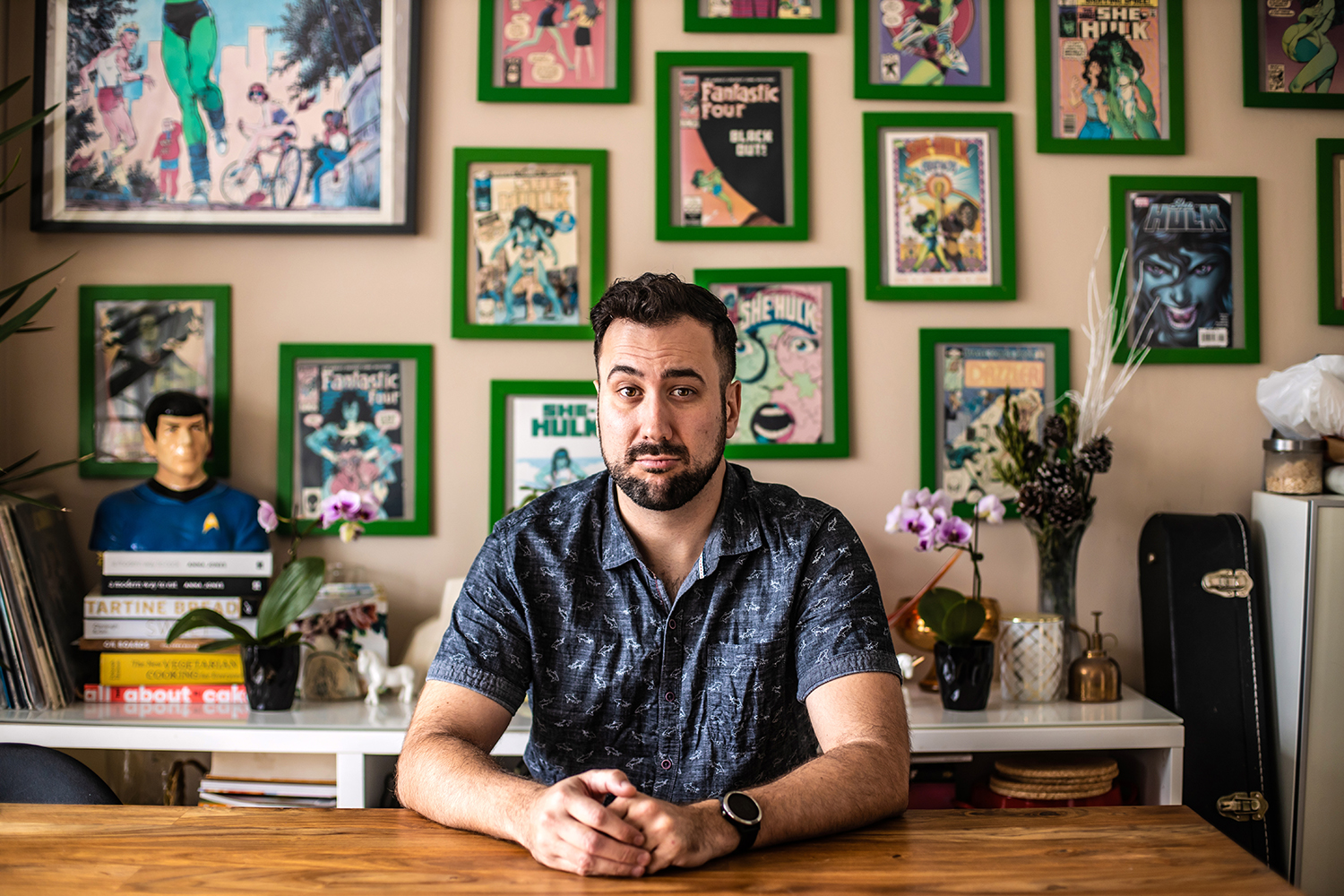Aaron Hagey-Mackay is a former writer and editor for The Beaverton, a satirical news website. He’s interested in how fake news and propaganda spread online. His new project, “The Gigawut,” is a YouTube channel that “uses fun and fact to keep the Earth alive.”
Prior to the pandemic, the actual news sometimes seemed like satire. Does this make being a satirist more difficult?
Yes! People like Donald Trump break all norms and expectations. How do you take something that’s absurd and make it more absurd? Before the total solar eclipse in 2017, we wrote a joke about Trump being so clueless he would stare right at the eclipse – and then he actually did it. To paraphrase comedian Norm MacDonald, Trump has made comedy very difficult for good comedians and very easy for bad comedians.
What’s the difference between satire and fake news?
The motive underlying them is different. Satire uses fiction or humour to point to a larger social or political truth. It only works if you know it’s made up. Fake news operates under the guise of credible journalism to convince you of a falsehood – usually for political or monetary gain. It only works when you don’t know it’s a lie. In short, satire plays with its audience; fake news preys on its audience.
Do you think most people can tell them apart?
A study found that people who identified as very conservative shared fake news at higher rates than liberals. Maybe Stephen Colbert was right to say, “Reality has a liberal bias.”
I think that’s true! Has the role of satire changed in recent years with the rise of the alt-right and authoritarianism?
I used to think satire was a cure for abuse of power – that the satirist uses humour to score rhetorical blows against tyrants. But this is an old way of thinking. Recently, I discovered that members of QAnon, a right-wing conspiracy group, were sharing a Beaverton article I’d written. The headline was “Disney Executives Pleased to Announce Acquisition of PornHub.” They were using the article as proof that “perverted elites run the world.” The lesson: Satire, just like fake news, can serve as a propaganda tool for good or bad.
What do you see as the good?
During periods of social stress, satire offers a “spoonful of sugar” to hard truths. It can be a source of insight and can convince you to pay attention to things you wouldn’t otherwise think about.
Does this have any larger impact in the world?
In a fractured, polarized media landscape, satire can cut through the noise. Still, it’s never going to change anything on a fundamental level. For that, we need larger political movements. True change won’t come out of your phone.
Recent Posts
For Greener Buildings, We Need to Rethink How We Construct Them
To meet its pledge to be carbon neutral by 2050, Canada needs to cut emissions from the construction industry. Architecture prof Kelly Doran has ideas
U of T’s 197th Birthday Quiz
Test your knowledge of all things U of T in honour of the university’s 197th anniversary on March 15!
Are Cold Plunges Good for You?
Research suggests they are, in three ways






One Response to “ Satire vs. Fake News ”
"A study found that people who identified as very conservative shared fake news at higher rates than liberals. Maybe Stephen Colbert was right to say, “Reality has a liberal bias.”"
A 2011 study by cognitive neuroscientist Ryota Kanai's group at University College London, published in Current Biology, found a correlation between differences in political views and differences in brain structure in a sample of university students. The researchers performed MRI scans on the brains of 90 volunteer students who had indicated their political orientation on a five-point scale ranging from "very liberal" to "very conservative." Students who reported more conservative political views tended to have a larger amygdala, a structure in the temporal lobe that performs a primary role in the processing and memory of emotions. In addition, they found clusters in which grey matter volume was significantly associated with conservativism in the left insula and the right entorhinal cortex.
There is evidence that conservatives are more sensitive to disgust and the insula is involved in the feeling of disgust. On the other hand, more liberal students tended to have a larger volume of grey matter in the anterior cingulate cortex (ACC), a structure of the brain associated with monitoring uncertainty and handling conflicting information. It is consistent with previous research suggesting that individuals with a larger ACC have a higher capacity to tolerate uncertainty and conflicts, allowing them to accept more liberal views. The authors concluded that, "Although our data do not determine whether these regions play a causal role in the formation of political attitudes, they converge with previous work to suggest a possible link between brain structure and psychological mechanisms that mediate political attitudes."